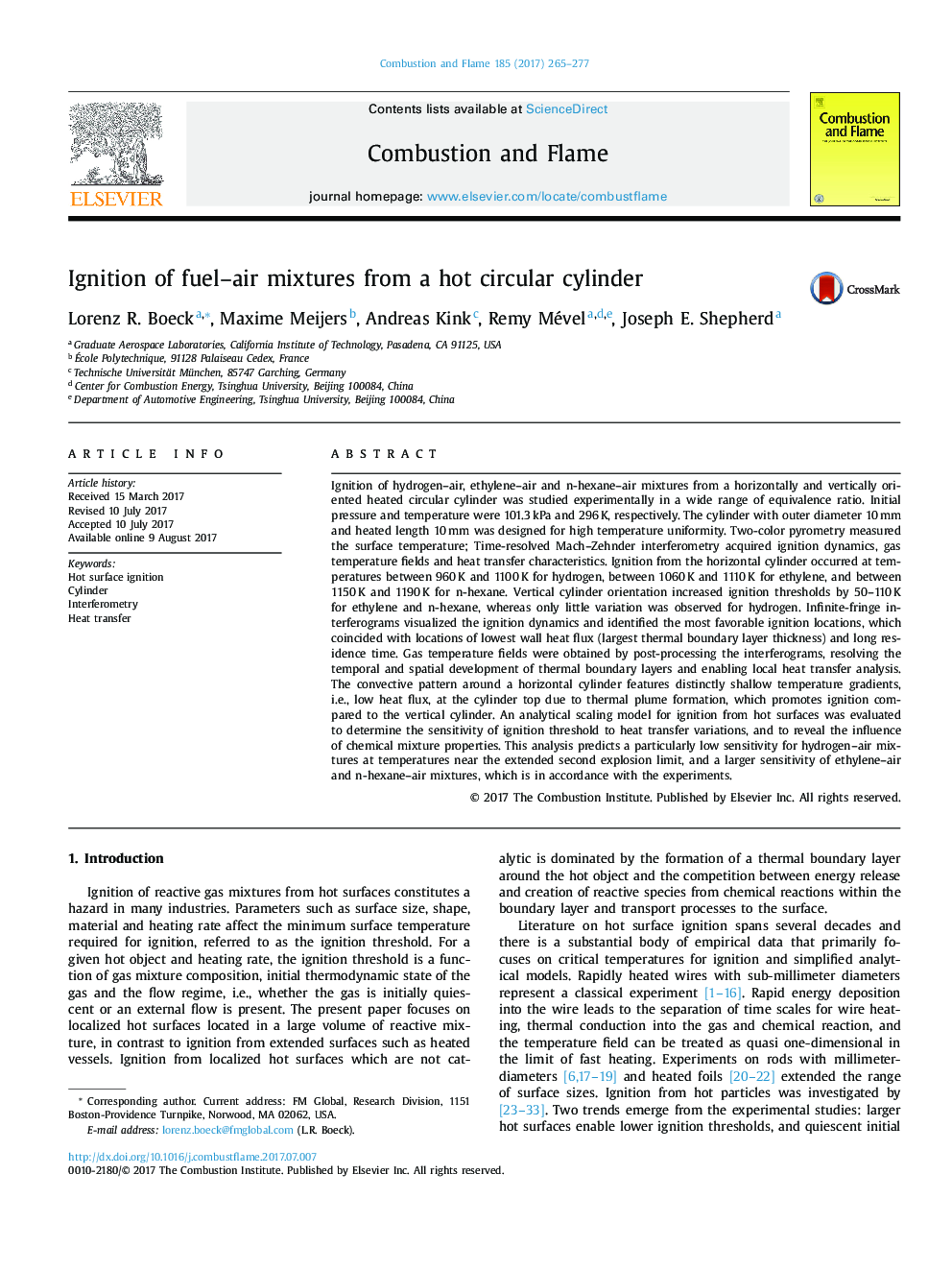| کد مقاله | کد نشریه | سال انتشار | مقاله انگلیسی | نسخه تمام متن |
|---|---|---|---|---|
| 6468077 | 1423552 | 2017 | 13 صفحه PDF | دانلود رایگان |
Ignition of hydrogen-air, ethylene-air and n-hexane-air mixtures from a horizontally and vertically oriented heated circular cylinder was studied experimentally in a wide range of equivalence ratio. Initial pressure and temperature were 101.3â¯kPa and 296â¯K, respectively. The cylinder with outer diameter 10â¯mm and heated length 10â¯mm was designed for high temperature uniformity. Two-color pyrometry measured the surface temperature; Time-resolved Mach-Zehnder interferometry acquired ignition dynamics, gas temperature fields and heat transfer characteristics. Ignition from the horizontal cylinder occurred at temperatures between 960â¯K and 1100â¯K for hydrogen, between 1060â¯K and 1110â¯K for ethylene, and between 1150â¯K and 1190â¯K for n-hexane. Vertical cylinder orientation increased ignition thresholds by 50-110â¯K for ethylene and n-hexane, whereas only little variation was observed for hydrogen. Infinite-fringe interferograms visualized the ignition dynamics and identified the most favorable ignition locations, which coincided with locations of lowest wall heat flux (largest thermal boundary layer thickness) and long residence time. Gas temperature fields were obtained by post-processing the interferograms, resolving the temporal and spatial development of thermal boundary layers and enabling local heat transfer analysis. The convective pattern around a horizontal cylinder features distinctly shallow temperature gradients, i.e., low heat flux, at the cylinder top due to thermal plume formation, which promotes ignition compared to the vertical cylinder. An analytical scaling model for ignition from hot surfaces was evaluated to determine the sensitivity of ignition threshold to heat transfer variations, and to reveal the influence of chemical mixture properties. This analysis predicts a particularly low sensitivity for hydrogen-air mixtures at temperatures near the extended second explosion limit, and a larger sensitivity of ethylene-air and n-hexane-air mixtures, which is in accordance with the experiments.
Journal: Combustion and Flame - Volume 185, November 2017, Pages 265-277
